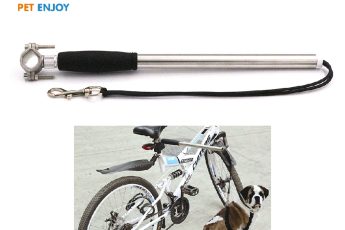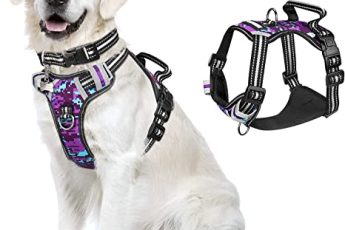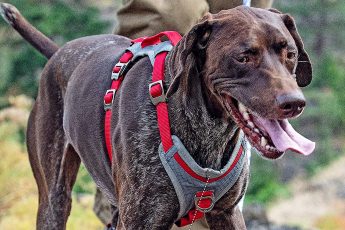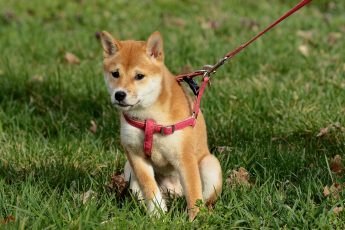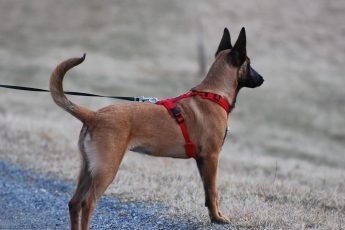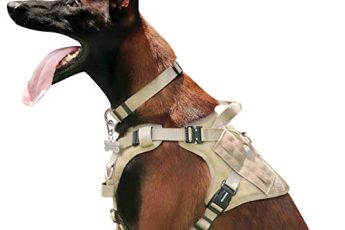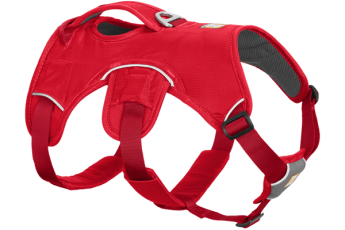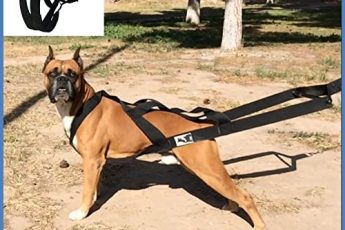What is the purpose of the front clip on a dog harness? This article will answer those questions and more. Learn more about dog harnesses with front clips.
Do front-attaching harnesses work better? Is it possible for a dog to escape a front-attaching harness? What are the benefits of a front-attaching harness? And, of course, is the front clip better for your dog?
Are front clip harnesses good for dogs?

Are front clip harnesses good for dogs or not? This question has been on many minds, but the answer may surprise you. Despite their popularity, the front-clip harness has its share of negative reviews.
For starters, the dog harness interferes with a dog’s natural movement. Veterinary physical therapists and veterinarians have observed increased chronic pain and injuries in dogs wearing these harnesses.
As an added benefit, front-clip harnesses can improve communication between you and your dog. While they are not the ideal solution for pulling, they are helpful for everyday walks, dog training sessions, and hiking.
With a no-pull front clip harness, your dog will get used to wearing it and not pulling as hard. These harnesses are particularly useful for small and medium-sized dogs that struggle to walk properly with a regular collar. And if you’re trying to control a large dog that pulls too much, a front-clip harness may not be for you.
What is the front clip for on a dog harness?
Dogs that bite are likely to react poorly to the front clip. This is because it lacks control of the dog’s mouth and head. It is not a good option for dogs that are easily bitten. The front clip on a dog harness should be used on short walks to prevent your pet from becoming accustomed to the pressure. In addition, this clip can wear out after a long time, so you should use it sparingly.
The front clip on a dog harness is a good option for people who want more control over their dog. These harnesses are commonly used by sled dogs to redirect momentum. Traditional dog harnesses may not be strong enough to control pulling dogs. With a front clip harness, you can attach a leash to it and attach it to the harness. This is a good choice if your dog is prone to pulling or is afraid of the leash.
Are front clip harnesses better?
Front clip dog harnesses offer several benefits for training your canine friend. They prevent your dog from pulling on the leash and provide neck stability. These harnesses are especially helpful for walking, hiking, running, and agility training. Like back clip dog harnesses, they do have their downsides, though. They only have one place for the leash and are not intended for regular use. In addition, they are not ideal for dogs that can choke. In these cases, your dog is more likely to choke on a front clip harness.
Harnesses are better for dogs that pull. Front-clip dog harnesses reduce the amount of pulling a dog does when walking. They are especially useful for training dogs not to pull. They are more comfortable for your dog, but they can also chafe your elbows. Front-clip dog harnesses are more comfortable for humans than collars, and they offer a greater range of sizes than collars.
Can a dog escape from a front clip harness?
The answer to the question, “Can a dog escape from a front clip puppy harness?” may depend on your dog’s size, prior training, lifestyle, and any other concerns. First and foremost, make sure your dog is comfortable with the harness. If you regularly pet and rub him, harness training will be easier. However, if your dog is nervous, harness training may take a little time.
A good way to avoid this problem is to choose an escape-proof harness that is comfortable for your dog to wear. If you’re unsure of whether your dog will tolerate a new harness, you can try it on in a familiar location first. The best way to do this is by dangling the harness in front of your dog and letting him poke his head through. Then, slowly introduce the harness to your dog, making sure they’re happy at each stage.
Do front harnesses stop pulling?
While dog leashes attached to the back encourage pulling, front dog harnesses are designed to prevent pulling. This kind of harness ties at the front and gives the owner more control when the dog pulls. The harness also helps prevent the dog from pulling if it has a loose leash. Here are some helpful tips for training your dog to walk properly on a leash. First, avoid walking your dog when it is pulling. You’ll reinforce the behavior with your voice.
A front attaching harness is not intended for running, as the straps can become tangled. This can be dangerous for both you and your dog. It’s also not the ideal no-pull fit, because a dog can step out of a loose harness. Furthermore, a front-attaching harness may also be too loose for your dog. Another issue is that your dog can step out of a loose front ring, which can cause injury. Moreover, the front ring can pull the chest piece too far to the side, causing your dog to strain.
Should You Use a Dog Harness That Clips in Front of the Chest?
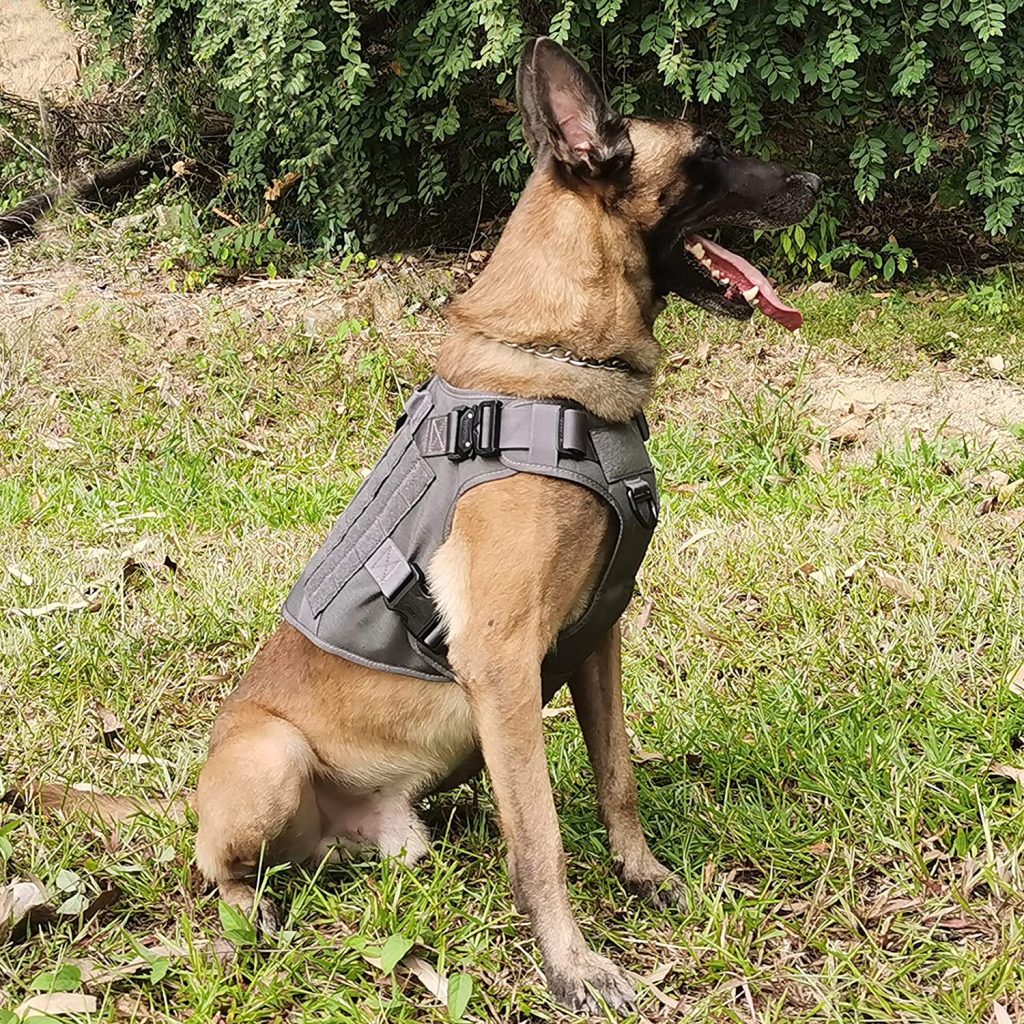
Although dog harnesses that clip in front of the chest are popular, some experts warn against using them. While front-clipped harnesses are convenient and easy to use, they can cause significant problems for your dog. Not only do they interfere with the dog’s normal movements, but some veterinary physical therapists and veterinarians have noted an increased risk of chronic pain or injury in dogs wearing these harnesses. For these reasons, using a dog harness with a front-clip is a good idea, but your veterinarian should check the safety of this harness with your pet before purchasing it.
Are front lead harnesses safe?
The first thing to consider is whether a front dog lead harness will cause any pain to your dog. Unlike prong collars, which are attached at the back, front dog lead harnesses attach to the chest instead. These harnesses are much safer for dogs, as they don’t cause the same painful sensation. Also, front dog lead harnesses do not chafe your dog’s skin, unlike a prong collar, which can cause serious health problems if your pet pulls against it.
Despite the many benefits of front dog lead harnesses, one of their main drawbacks is their limited functionality compared to back clip harnesses. This harness only has one location to attach the leash, which makes it difficult to train your dog for regular walking or running. Another disadvantage of front dog lead harnesses is that they can be difficult to adjust, and some dogs can choke on them. As such, you should only use a front dog lead harness if you are confident with your dog’s leash training.
How do you use a front attachment harness?
A front clip harness gives the owner more control over their dog. It has a clip in the center of the chest that prevents the dog from moving forward. It distributes pressure evenly throughout the dog and discourages it from running away. This attachment point is similar to the Sensible harness. You can use a front clip harness to control your dog while on walks. Here are some tips to properly use one.
Firstly, the chest strap crosses the shoulders. The plastic buckles or nylon straps are light-duty. Another benefit of using a front-attachment harness is that it allows you to attach a leash through the front-attachment ring. Otherwise, the leash tension would pull on the collar. Different people may have different priorities and preferences when it comes to harness design. To avoid confusion, harness manufacturers often include instructional videos that walk users through the usage process.
How do you attach a front clip harness?
A front clip harness is an accessory with a lead attached in the middle of the dog’s chest. It’s also known as a no-pull harness and can help with a variety of behavioral issues. It is easier to control a dog that pulls while wearing a front attach harness – a pulling dog won’t get very far before turning back to his owner. As a result, it’s an excellent tool for training leash manners.
Front clip harnesses are available in many styles and colors. They can clip in the front, the back, or both. The design allows full shoulder movement, and the straps touch specific acupressure points on the dog’s chest and back. Front clip harnesses also tend to be easier to adjust than other types of dog collars, so you can find the right one for your dog’s size and shape.
How do I stop my dog from backing off his harness?
The first step in stopping your dog from backing off his harness is to tighten the straps. It may be difficult to tighten them when your dog slips his shoulders free of the harness. If your dog keeps pulling on the leash, you may have to try using a different harness or getting professional help. If you cannot find a solution that works, you can try a lock carabiner. It prevents your dog from backing out and makes it easier to control your dog while walking.
If your dog chews on the straps, he may try to wiggle out of the harness. To prevent this, choose a harness made from stronger material. You can also purchase a harness with a mesh material to prevent your dog from chewing through it. If your dog likes to gnaw on everything, make sure the harness is made from durable materials and is fitted correctly. It is important to monitor your dog wearing a harness so that you can intervene if he decides to chew on it.
Is there a harness that a dog can’t get out of?
There are several reasons why your dog might be escaping from a harness. Often, a dog will simply bite through the straps and break free. These types of escapes can occur even when the harness is made of durable material. You should check your harness’s construction for durability. If a dog has a tendency to chew on the harness, you should look for a tough one that is difficult for your dog to open and close.
Another reason for a dog to try to get out of a harness is that it will be incredibly difficult to remove. A good harness will have three straps that wrap around your dog’s body, which makes it hard for them to escape. In addition, many owners don’t bother to put the collar on their dog once they’ve put on the harness. However, this will ensure that they’re still connected to you in case of an emergency.

